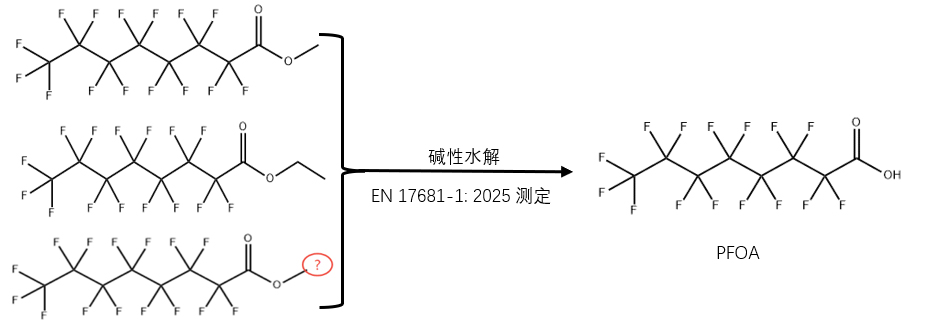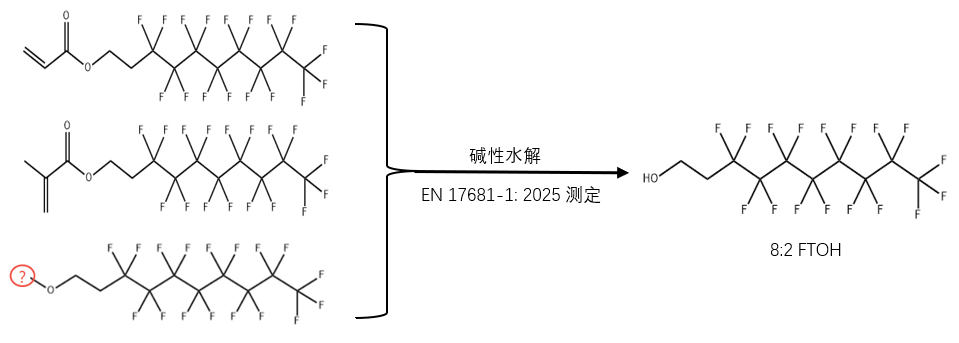The European Standardization Committee officially released the new standard EN 17681-1:2025 (original draft number prEN 17681-1:2023) on April 30, 2025, which has significant technical changes compared to the old version EN 17681-1:2022. The new standard specifies an extraction test method that uses a methanol/sodium hydroxide mixed solution for alkaline hydrolysis. This extraction solvent can not only extract residual PFAS components from the sample, but also crack ester polymers formed by side chains of polymerized hydrocarbon acids (such as acrylic acid) and n-2 fluorotelomers (n-2 FTOHs), resulting in a significant increase in the detection rate of PFAS in textiles, especially for n-2 FTOHs (n=4, 6, 8, 10) category standards.
01 Differences between old and new methods method EN 17681-1: 2022 EN 17681-1: 2025 Extraction solvent methanol Methanol/Sodium Hydroxide Mixed Solution Detectable PFAS Extractable PFAS components Extractable PFAS and related side chain fluorinated polymer degradation released PFAS components Due to the restrictions imposed by EU regulations on the detection of side chain fluoropolymers by the new method, and their association with perfluorooctanoic acid (PFOA) and C9-C14 perfluorocarboxylic acid (PFCA), it may indirectly affect the detection of PFOA or C9-C14 PFCA related substances. For example: The following compounds will hydrolyze and release PFOA, and the measured results include PFOA and related side chain fluorinated polymers.

The following compounds will hydrolyze and release related fluorinated polymer alcohols n: 2 FTOH (n=4, 6, 8, 10), and the measured results include n: 2 FTOH and related side chain fluorinated polymers.

02 The implementation of new standards will have an impact on enterprises By using the new method, the detection rate of PFAS will be significantly improved. There is a high risk that the old method EN 17681-1:2022 may yield qualified results, while the new method EN 17681-1:2025 may yield unqualified results. If relevant companies are still using the old version EN 17681-1:2022 method for PFAS determination, it is recommended to transition to the new method as soon as possible to ensure that the product meets the requirements of relevant regulations.